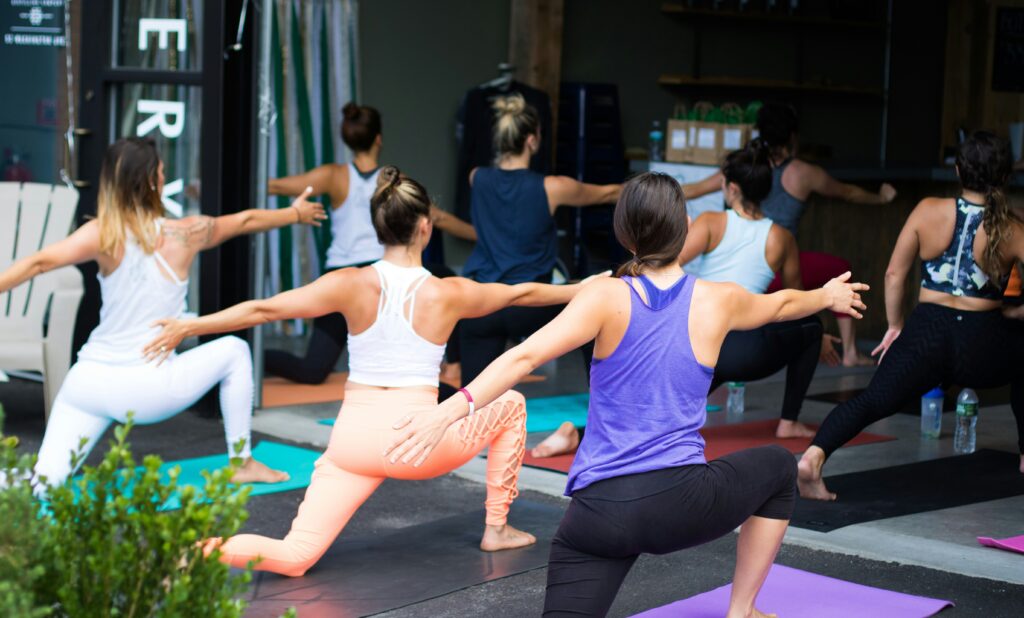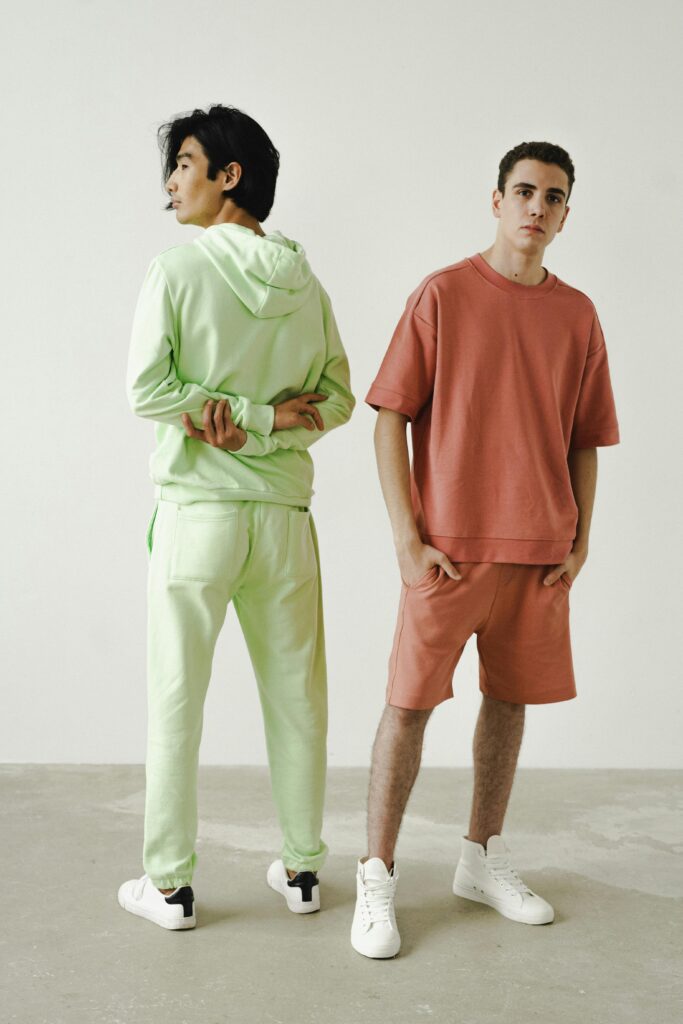Ever wondered why you’re not as fast as Usain Bolt? It might be that you’re wearing the wrong t-shirt. Okay maybe not, it’s possible that talent, athleticism and hard work have more of an impact. Having the right athletic wear though, has been shown to improve performance. While the gains might be more marginal, it’s much easier to change your clothing than your genes.
With the vast amounts of money generated by professional sport, it’s no surprise that a lot of research has gone into making athletic wear that helps you perform at your highest level, but do you know how it actually helps?
Here we’ll answer the questions of what performance fabric is, and how it can improve athletic performance. These are important things to know if you’re buying apparel for yourself or others, or selling it as part of your business.

What Is Performance Fabric?
Performance fabrics are synthetic textiles that have been made with athletic activity in mind. While the textiles themselves were created near the middle of the 20th century, their application to sport came later, and performance fabrics have all been engineered to make them more suitable for physical activity. That doesn’t mean they are only used for sports- the lines between loungewear and athletic wear are increasingly blurred these days.
How Do They Help?
There are various ways that sportswear can enhance performance, let’s have a look at each.
Keeping You Warm
Synthetic materials make great thermal clothing; whether for a fine underlayer, or a big fleece to wear over everything else. Natural materials can also be very warm, but will then be heavy and bulky. Performance fabrics can keep you warm without the extra weight. Extra weight is a big drawback for almost any physical activity, so this is very useful if you’re working out in the cold.

Keeping You Cool
It used to be that you had to choose between keeping warm and having breathable clothes. Performance fabrics can keep air circulating freely, even if designed for warmth. Thermoregulation brings vapor closer to the skin, or further away, depending on outside conditions, so the same garment can keep you both warm and cool.
This is key to keeping athletes cool during an intense workout, and helps reduce sweating and bad odors. Anyone who goes running in the cold will know that your temperature can vary massively during exercise, so to stay comfortable you need clothing for a range of temperatures. If you’re not thinking about temperature, you can focus more on your performance.
Moisture Wicking
If you’ve ever done strenuous exercise in a cotton t-shirt, you’ll notice how the chest gets very sweaty very quickly. After an hour or two, you can pretty much wring the whole shirt out. Sports clothes don’t do that, thanks to moisture-wicking. This technology quickly draws moisture away from the skin, allowing it to evaporate, and keeping the t-shirt dry. This offers more than just comfort. The extra weight you carry around with a wet t-shirt can affect fatigue, which could be costly, given the fine margins of top-level sport.

Beyond the extra weight, keeping athletes dry helps avoid skin irritation and chafing. It also prevents the growth of bacteria, which would otherwise create nasty odors. Antimicrobial technology is also applied to performance fabrics these days, to boost protection.
Durability
Sportswear undergoes more rigorous treatment than normal clothing, it also tends to get put through the wash more often. It needs to be tough then. The problem is, you also want sportswear to be lightweight, so you can move around. Performance fabrics manage both; there are synthetic materials that are extremely light, but still hold up better under strain than natural textiles.
This extra strength is not just about keeping clothing safe, and can also protect the wearer. Stronger materials such as nylon can prevent grazing and other injuries. Synthetic materials can also contain UV protection, which is important if your sport has you outside in the sun all day. Even through clothing, radiation can damage your skin over time.

Elasticity
In sports you need flexibility, and not just in sports like yoga, or gymnastics, which are famous for it. In most sports you need to lunge for something at some point, and it’s nice when your clothes don’t lock up at the last moment. Nothing beats the stretchiness of spandex, but other performance fabrics, such as polyester, are also more elastic than their natural counterparts.
Elastic fabrics are also believed to offer a slight aerodynamic advantage, as the material hugs the skin, offering less drag. One reason you never see pro cyclists wearing baggy cotton t-shirts.

Convenience
Performance fabrics are often water resistant, which is great whether you’re exercising or not. As well as all the benefits you get during exercise, performance fabrics are handy when you get home. They’re almost always stain-resistant, machine-washable, and wrinkle-proof. The colors don’t run, and they don’t shrink or fade over time. They dry quickly too, so if you’re ready to get back on the track the next day, your clothes will be too. These are some of the reasons their use is less limited to sport these days, and they’re taking over the regular clothing market.
What Are the Main Performance Fabrics?
We know why they’re useful, but performance fabrics don’t all have the same qualities. So let’s take a look at the major players, and what they’re best used for.
Polyester
The most major of players. Polyester was first patented during WWII, and became commercially popular a couple of decades later, mostly for its anti-wrinkle properties and durability. Nowadays it is the most common fabric in athletic wear; it’s lightweight and breathable, but also insulates, so you can find it in all kinds of clothes. It’s also combined with just about everything, to add its properties to other materials.
Nylon
The original. Nylon was made in 1935, and may or may not have been named after New York and London, when its creators were flying between the two cities. Nylon is very strong, especially for such a lightweight material. It’s also water-resistant, and normally used for outerwear, such as jackets, or swimwear.
Acrylic
Soft and warm, acrylic is the closest synthetic alternative to wool, and allows for more lightweight warmth and durability. Acrylic is often mixed with polyester, and used in sweaters and fleeces. These are great for sports in the extreme cold, and those where you don’t build up quite as much of a sweat, like hiking. Unlike wool, it won’t shrink in the wash.
Spandex
Also known as lycra or elastane, spandex is the king of stretch. Often combined with other materials such as nylon, to add its elastic quality. Spandex is used to make close-fitting clothing; swimming, cycling, and yoga gear usually have at least some spandex in them. Leggings are another example of sportswear that has become part of everyday clothing.

Rayon
Rayon is considered semi-synthetic. The raw ingredient, usually wood pulp, is natural, but the processes used to refine it stop it from being classified as such. It’s the closest replica to silk, and very soft. More often used in dresses and blouses, is also found in loose-fitting sportswear, like tank tops and t-shirts.
Polyethylene
The most widely used plastic in the world. Polyethylene is usually seen in plastic bags or food packaging, but can also be turned into textiles. Its waterproof qualities make it good for camping gear, and serious wet-weather clothing. It can also make a synthetic version of rubber, used in trainers and other footwear.
So No More Natural Fabrics?
Not so fast. There are pros and cons of both. Performance fabrics might be better when you’re running around, but otherwise, it’s hard to beat cotton and silk for comfort. Natural fibers are naturally breathable, and while the synthetic versions might not smell bad in the moment, they probably will the next day. Natural textiles usually don’t need to be washed each time you wear them.
We also need to remember the effect on the planet. Synthetic fabrics often do more damage to the planet when being made, and are not biodegradable, so continue to do so after. The textile industry continues to evolve though, and modern fabrics are being made with the environment in mind, so this is becoming less of an issue.
Performance fabrics are an essential part of your wardrobe, you don’t want to be working out without them. They’re also great gifts, and help get your loved ones up and about. If you’re a retailer, you simply can’t ignore athletic wear. Aside from catering towards a more exercise-conscious society, younger generations now wear sportswear whatever they’re doing.

Buying new clothes may not turn you into the next Simone Biles, but it can help you on your journey. Either way, at least you’ll look good while you’re doing it.
For performance gear to loungewear, and everything in between, visit Wordans for quality blank apparel. To see our products in action, take a look at our Instagram, @wearewordans.














